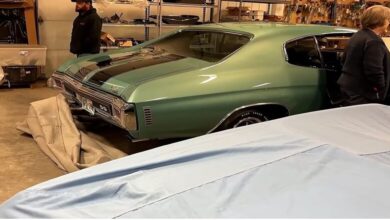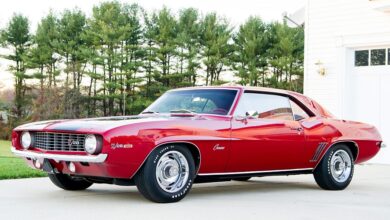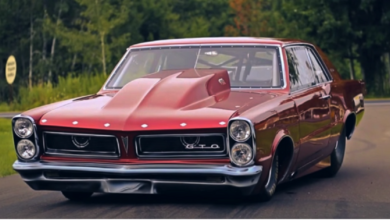The Astro II Was a Mid-Engine Corvette Spaceship.
For a period starting in the late 1960s, it looked like everyone was going mid-engine. After Lamborghini turned the world on its head with the excruciatingly beautiful Miura in 1966, mid-mounted drivetrain layouts became de rigueur in 1970s supercars. Ferrari followed suit with the 206 Dino and later 365 GT4 BB, Lancia with the Stratos, and even Maserati joined the fray in 1971 with the mid-engined Bora. It wasn’t just the Italians, either—Mercedes-Benz tested the handsome C111 platform, and later BMW launched the M1. If there was a high-performance, high-dollar car in the 1970s, you can be sure the automaker at least tested a mid-engine platform.
Unsurprisingly, that also included General Motors. After its CERV II concept successfully demonstrated the General’s capacity for cutting-edge tech, serious attention was turned toward moving the Corvette’s V-8 thumper amidships. Papa Corvette—Zora Arkus-Duntov—really, really liked the idea of a mid-engined Vette to keep up with Europe’s finest, so he pushed for a series of concept cars previewing what a production-ready mid-engined Corvette might look like.
Around the same time as the CERV II, Arkus-Duntov and Corvair engineer Frank Winchell whipped-up the rear-engined XP-819, utilizing an lightweight-ish aluminum V-8 and massive rear tires to offset all that mass hanging over the rear axle. Duntov wasn’t the biggest fan of the rear-engine configuration from the get-go, and after a crash on the proving grounds, the project was shelved.
A few years later, the first serious pseudo production mid-engine effort arrived with the car seen here, the 1968 Chevrolet XP-880, or Astro II concept. It was stunningly attractive, thanks in no small part to input from Corvette design guru Larry Shinoda. Though not as refined, the profile of the Astro II was every bit as graceful and dramatic as the contemporary Lamborghini, with dramatic swoops, curves, and plunging lines that made the body appear as though it hung from the suspension mounts.
Underneath the skin, it wasn’t nearly as highfalutin. A backwards-mounted 7.0-liter (427-cubic-inch) V-8 pushed out a respectable 400 horsepower, routed to the back wheels through a two-speed automatic transaxle pulled from a 1963 Pontiac Tempest that was a bit of a glass cannon. Nevertheless, the 3,300-pound wedge was able to crack 1.00 g of cornering grip at the able hands of Duntov—and that was on street tires.
Unfortunately, the Astro II was one of the first of a long line of mid-engine false starts for the Corvette. The fabulous design never made it past breathless headlines and a brief auto-show rotation. If we’re being pragmatists, it wouldn’t have made much sense if it did make it to full-scale production. The investment would have been immense, and considering GM could sell every single Corvette it made, what was the point of adding complexity to the mix? As a consolation prize, the rear-end of the 1974 Corvette received some Astro-esque styling details.
Astro III followed soon after, but that torpedo-cum-tricycle showcased the General’s nascent turbine tech rather than anything Corvette-related. After the spectacular, front-engined 1969 Manta Ray concept, the 1969 XP-882 advanced the mid-mounted story that finally culminates this year in the all-new 2020 C8 Corvette.








Why is it I always really feel like you do?
That’s very good point
I was just telling my friend about that.
I was just telling my friend about that.
That’s very good point